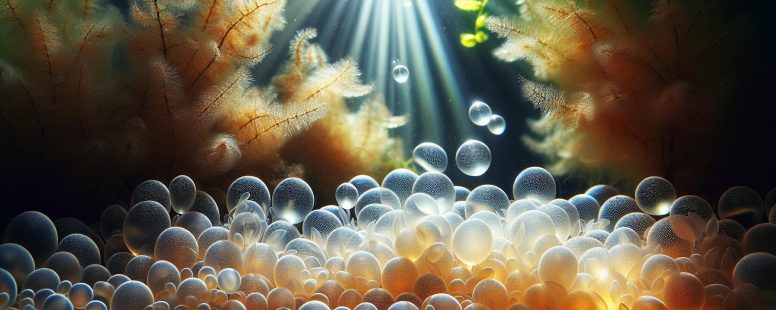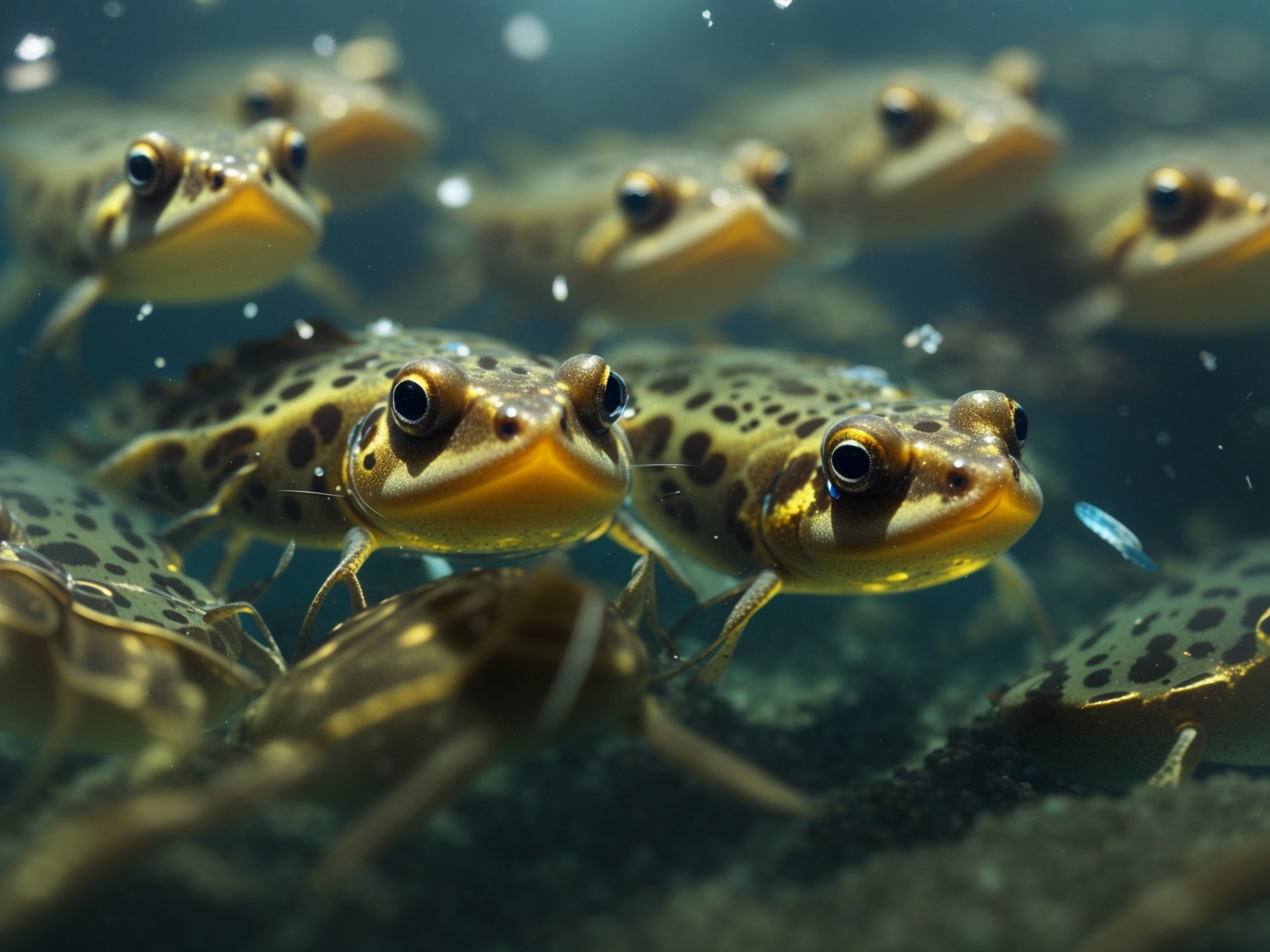Identifying Snail Eggs: What Do They Look Like?
Ever wondered what the tiny spheres in your garden or aquarium might be? Chances are, you’ve stumbled upon snail eggs, a common yet intriguing sight. Snails, those slow-moving garden dwellers, are prolific breeders, and their eggs are a fascinating part of their life cycle.
Knowing what snail eggs look like is crucial for gardeners and pet owners alike. They’re not just an indicator of a healthy snail population, but also a sign that you might need to manage their numbers. Let’s dive into the world of snail eggs and uncover their appearance and characteristics.
What are snail eggs?
Snail eggs may not be what you’d expect. If you’re mulling over your garden or peering into your aquarium and notice small, jelly-like clumps, you’ve likely stumbled upon them. These clusters are quite distinctive – soft, slightly translucent, and often containing dozens of eggs.
Snails are known for their reproductive vigor. Their eggs vary in color, often appearing milky white or slightly pinkish, depending on the snail species. For instance, the common garden snail’s eggs will be round and small, about the size of a pea. On the other hand, if you’re raising Achatina fulica, the African giant snail, you’ll find their eggs to be markedly larger.
- Appearance: Ranges from spherical to ovular shapes
- Color: Milky white to pinkish hue
- Size: Approximately 1/8 inch to 1/4 inch in diameter
When you’re growing your garden or maintaining an aquarium, keeping an eye out for these eggs turns into a bit of a treasure hunt. They’re often hidden beneath the soil’s surface or wedged in sheltered nooks within your tank. In gardens, snail eggs most commonly rest under leaves, boards, or loose bark, where they stay protected and maintain the necessary moisture levels.
Understanding what snail eggs look like isn’t just a curiosity—it’s essential for managing the snail population. If you’re aiming for pest control, early identification allows you to remove the eggs before they hatch. Conversely, aquarium enthusiasts seeking to propagate their pet snails will find recognizing and caring for these eggs integral to a healthy snail colony.
By keeping track of the conditions where snail eggs thrive, you’re a stride ahead in your gardening or aquarium journey. Moist, protected environments are prime spots for snail egg deposition, so monitoring these areas can give you insight into the snail life cycle playing out in your own backyard or aquatic setup.
The importance of identifying snail eggs

When you’re tending to your garden or maintaining your aquarium, spotting snail eggs quickly is a game-changer. Knowledge is power here, and understanding the telltale signs of these eggs can make all the difference. It isn’t just about pest control; it’s about creating harmony in your little ecosystem.
Snail eggs, those little jelly-like specks, are more than meets the eye. Spotting them promptly means you can manage snail populations effectively. If your aim is to limit their numbers, finding eggs early gives you an edge. Conversely, if you’re breeding these creatures, recognizing the beginning stages of life ensures the health and growth of your snail community.
Your ability to identify snail eggs plays a key role in environmental management. Some snail species can be beneficial, aiding in the decomposition process and providing a food source for other wildlife. Others might be unwelcome guests, munching through plant leaves faster than you can say “garden snail.”
Here’s a brief rundown of what you’re looking for:
- Soft, jelly-like texture
- Can vary in color; often pale or translucent
- Clustered together, usually in a concealed location
Arming yourself with this information reduces the chances of an unexpected snail takeover. Remember, these critters can be quite prolific breeders. A single unnoticed clutch of eggs can lead to a population boom before you realize it. Monitoring and managing these eggs helps maintain the balance you desire in your green space or aquascape.
Not to forget, conditions that favor snail eggs, such as moisture and temperature, reflect the health of your space. Observing where and when snail eggs appear can provide clues about your environment, potentially indicating if it’s time to adjust your gardening or aquarium maintenance routines. Keeping an eye on these factors, you’ll be able to tweak conditions to support or discourage snail life based on your needs.
Learning what snail eggs look like is a skill that serves multiple purposes. Whether you’re looking to protect your plants or promote biodiversity, your watchful eye and timely actions are crucial.
Shapes and sizes of snail eggs

When you’re peering into your garden or aquarium, understanding what snail eggs look like is key. While the specific characteristics can vary depending on the species, there are some general traits to keep an eye out for.
Most commonly, snail eggs are small, spherical orbs. However, they’re not always perfect little pearls. Depending on the snail species, the shape may be slightly irregular, akin to tiny pebbles. For instance, the eggs laid by an apple snail tend to be rounder while those of a pond snail might be a bit more oval.
The size of snail eggs is another aspect you’ll want to note. They can range dramatically in size. To give you an idea, here’s a quick rundown:
| Snail Species | Approximate Size of Eggs |
|---|---|
| Apple Snail | 2-3 mm |
| Pond Snail | Less than 1 mm |
| Garden Snail | 1-2 mm |
These measurements are merely averages and could fluctuate based on the snail’s environment and age.
Color also plays a part in egg identification. While most eggs start off with a soft, translucent hue, they can turn more opaque as they develop. Some may even exhibit a milky or pale pink tinge just before hatching. So when you’re checking for eggs, keep a lookout for subtle shifts in coloration—these can signal that snail babies are on the way.
Bear in mind that the number of eggs laid at a time can be quite telling. Some snails will deposit clusters of eggs en masse, which can amplify the risk of a population bloom if you’re not careful. Monitoring and managing these egg clusters is critical in controlling snail populations and keeping your plants safeguarded.
When you’re familiar with the visual cues of snail eggs, you can take proactive steps to manage them. Whether you’re working to prevent a pest outbreak or encouraging a healthy colony, recognizing the shapes and sizes of these eggs will serve you well as you maintain your green space or aquatic habitat.
Colors of snail eggs

Ever peered into your garden and spotted a cluster of small, translucent orbs? They’re not dewdrops or gems – they’re likely snail eggs! Snail eggs vary widely in color, influenced by factors like species, environment, and diet.
Dominant hues in the snail egg palette range from milky white to a pale pink. Some snails produce eggs with a subtle, almost pearly glow while others are more opaque, masking the developing snaillets inside. If you’re growing leafy greens or have a vegetable patch, keep an eye out; these are snail hotspots where eggs might be hiding.
Intriguingly, color can also reflect the egg’s stage of development. Freshly laid snail eggs tend to have a soft, lighter color. As the snails mature inside, the shell hardens and may darken slightly. This color shift is your cue that a new generation of snails is about to hatch.
And there’s a spectrum of color among different species. For example:
- Garden snails generally have off-white to beige eggs.
- Apple snails, found near water bodies, can lay eggs that are pinkish or slightly orange.
- Giant African land snails produce eggs that are a tinted yellow-brown.
While you’re scanning for these mini marvels, note their environment – it affects their survival. Snail eggs exposed to sunlight might turn a different hue as they try to camouflage or protect the developing snail from harsh rays.
It’s fascinating, isn’t it? As you learn to identify these color variations, you’ll be better equipped to manage snail populations in your garden. Whether you’re a gardener or an eco-enthusiast, understanding the color details can take you a step closer to a balanced backyard ecosystem. Keep your eyes peeled for these little specks; they’re small but significant indicators of the health and diversity of your garden’s inhabitants.
Tips for identifying snail eggs in your garden or aquarium

When you’re combing through your garden or peering into your aquarium, spotting snail eggs might not be straightforward. But with a few practical tips, you’ll be able to identify these tiny potential pests or future pets.
Know What You’re Looking For
Snail eggs can be surprisingly varied, but generally, they’re small, spherical, and often cluster together. They can range in color from translucent to milky white or even light pink, depending on the snail species. In gardens, you’ll probably find them underneath leaves, close to the soil, while in aquariums, they tend to be attached to surfaces like plants or decoration.
Check Regularly
- Inspect plants and the surface of the soil
- Look at the underside of leaves, especially those close to the ground
- Examine the decorations and the tank’s walls in an aquarium
Light it Up
Using a flashlight can make snail eggs visible, especially in darker areas of an aquarium. The light will help you spot the slight sheen of the egg clusters, making them stand out against the backdrop.
Gentle Probing
Sometimes gently touching the soil or aquatic plants can reveal hidden snail clusters. Be sure to be delicate – you don’t want to harm the eggs if your goal is to raise snails.
Remember, timing is key when dealing with snail eggs. Keeping an eye on known snail habitats and checking for eggs every few days can prevent a population boom. Whether you’re looking to preserve your plants or raise these creatures, understanding their early life stages is a significant step toward a thriving garden or aquarium.
Conclusion
Armed with the knowledge of what snail eggs look like and where to find them you’re now well-equipped to manage these little critters in your garden or aquarium. Remember timing is key so stay vigilant and check those likely spots often. Whether you’re looking to encourage their presence or keep their numbers in check you’ve got the insight needed to coexist with these fascinating creatures. Embrace the role of an informed observer in your ecosystem and enjoy the wonders of snail life cycles right at your fingertips!
- How Much Can I Charge for Lawn Care Services From Home? Pricing Tips to Maximize Profit - October 25, 2025
- Why Install a Privacy Fence? Key Benefits for Security, Value & Peace of Mind - October 25, 2025
- Where Can I Advertise My Backyard Business? Best Online & Local Advertising Tips - October 24, 2025




